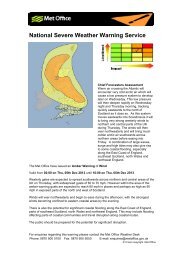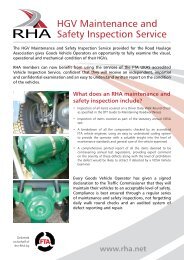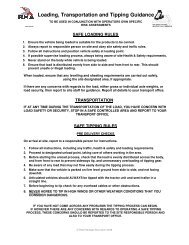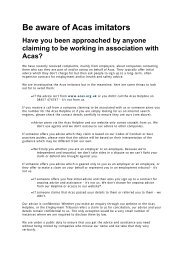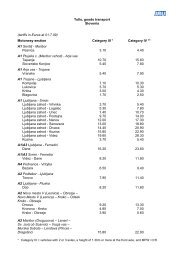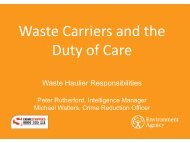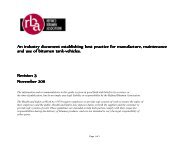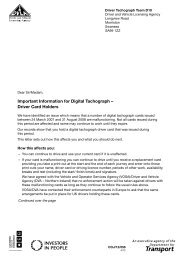Testing and Inspection of Old Tanks
Testing and Inspection of Old Tanks
Testing and Inspection of Old Tanks
You also want an ePaper? Increase the reach of your titles
YUMPU automatically turns print PDFs into web optimized ePapers that Google loves.
1 IntroductionThe Carriage <strong>of</strong> Dangerous Goods <strong>and</strong> Use <strong>of</strong> Transportable Pressure EquipmentRegulations 2009 (CDG 2009) bring Directive 2008/68/EC on the inl<strong>and</strong> transport <strong>of</strong>dangerous goods (DG Directive) into effect in GB. The DG Directive brings together therequirements for the rail <strong>and</strong> road transport <strong>and</strong> adds requirements for inl<strong>and</strong> waterways.The DG Directive requires tanks to comply with provisions <strong>of</strong> RID <strong>and</strong> ADR for bothconstruction <strong>and</strong> for use. The DG Directive permits tanks constructed to nationalrequirements <strong>and</strong> not to the provisions <strong>of</strong> RID or ADR. These tanks known as ‘old tanks’in GB <strong>and</strong> NI, are restricted to national transport unless there is agreement betweenindividual states to allow cross border traffic. <strong>Old</strong> tanks may continue in service, providedthey are properly maintained <strong>and</strong> are safe for the remainder <strong>of</strong> their working lives.<strong>Tanks</strong> for the carriage <strong>of</strong> dangerous goods in GB <strong>and</strong> NI that were not RID or ADR tankswere inspected by a ‘competent person’ to a ‘written scheme <strong>of</strong> examination’. Thismethod <strong>of</strong> examining tanks does not require the competent person to be appointed <strong>and</strong>the owner/ operator <strong>of</strong> the tank has the responsibility to write a suitable written scheme<strong>of</strong> examination <strong>and</strong> to ensure that it is carried out. On 2 July 2006 inspections bycompetent persons ended with inspections now being carried out by inspection bodiesappointed by the Secretary <strong>of</strong> State for Transport.These procedures replace the individual written schemes <strong>of</strong> examination with anapproach based upon the requirements <strong>of</strong> RID <strong>and</strong> ADR but taking account <strong>of</strong> thedifferent constructional differences that may exist between old tanks <strong>and</strong> RID or ADRtanks. The requirement for old tanks to be maintained to a written scheme <strong>of</strong>examination is set out in the Carriage <strong>of</strong> Dangerous Goods; Approved Derogations <strong>and</strong>Transitional Provisions (Approved Derogations). These procedures <strong>and</strong> must be used<strong>and</strong> applied in accordance with the Approved Derogations including any transitionalprovision in the Approve Derogations.The competent authority for the appointment <strong>of</strong> tank <strong>and</strong> pressure receptacle inspectionbodies is in GB, the Secretary <strong>of</strong> State for Transport <strong>and</strong> HSENI in Northern Irel<strong>and</strong>.Compliance with these procedures is necessary for appointment <strong>and</strong> continuation <strong>of</strong>appointment as an inspection body. These procedures cannot cover all situations <strong>and</strong>will be amended in the light <strong>of</strong> experience <strong>and</strong> changes in legislation.That success in the inspections <strong>and</strong> tests conducted in accordance with theseprocedures, <strong>and</strong> the allocation <strong>of</strong> a certificate does not authorise the use <strong>of</strong> a tank forany dangerous goods. The tank instructions, published in the various modal regulationsmust also be complied with as must all other relevant requirements <strong>of</strong> the modalregulations.4



